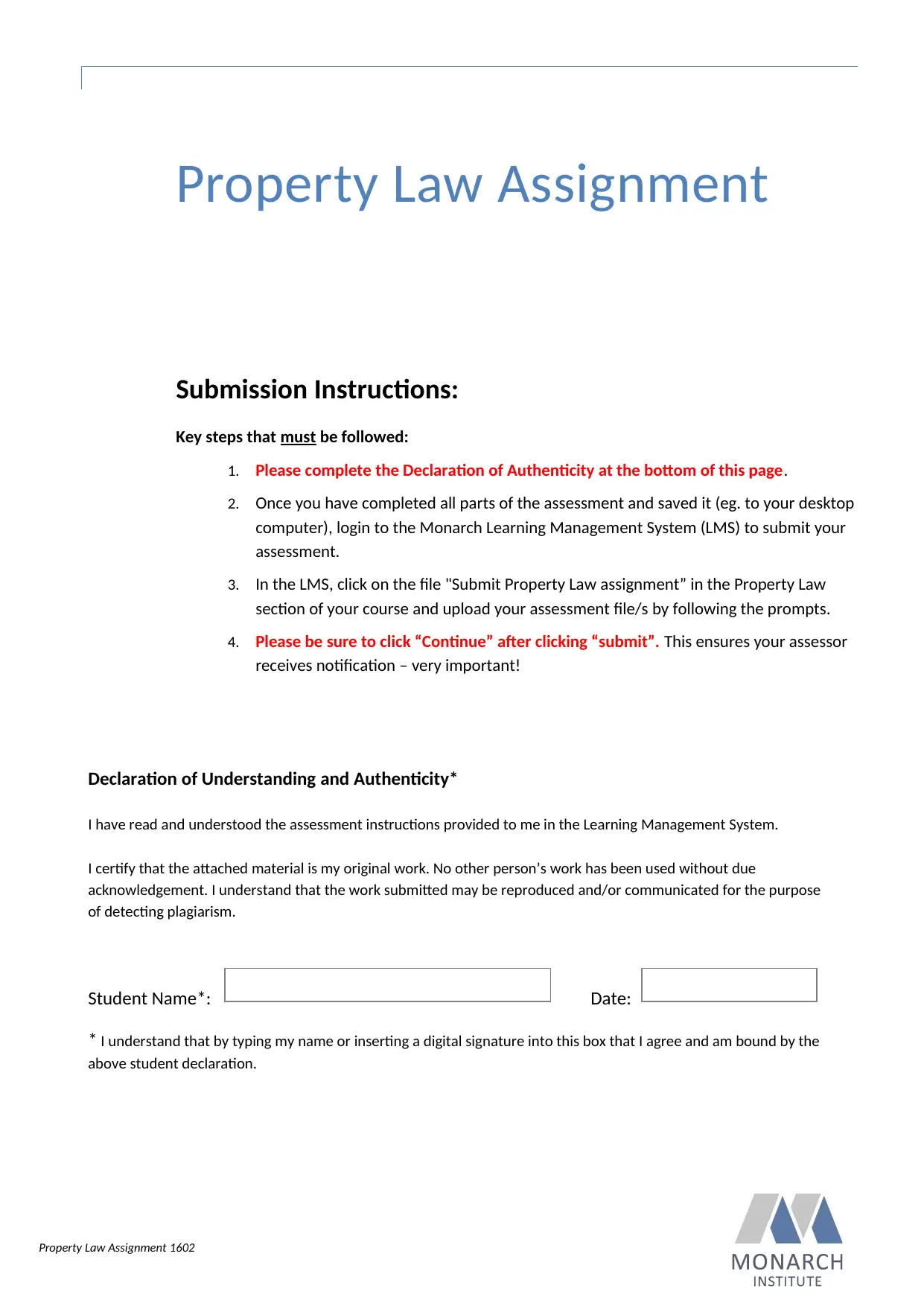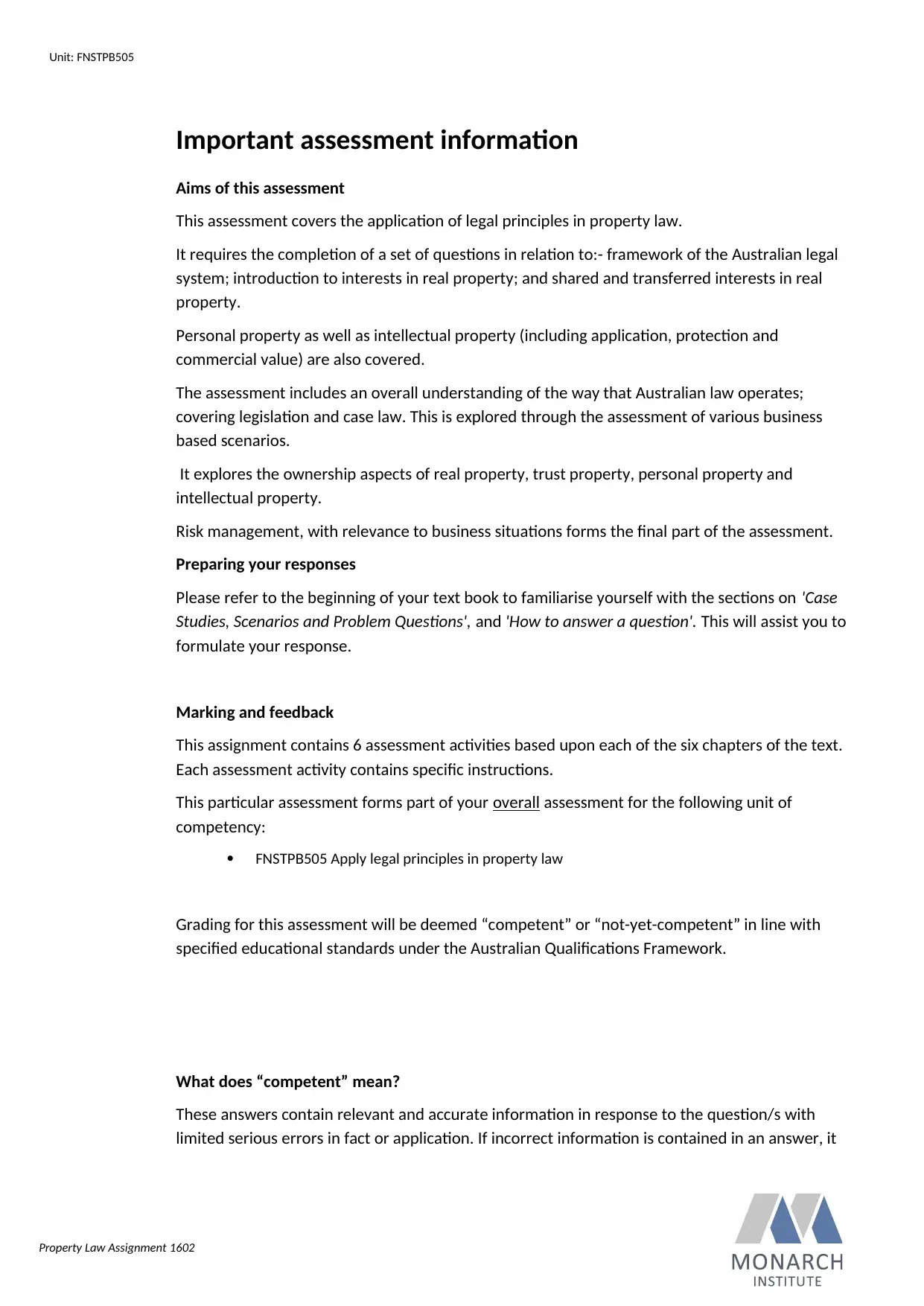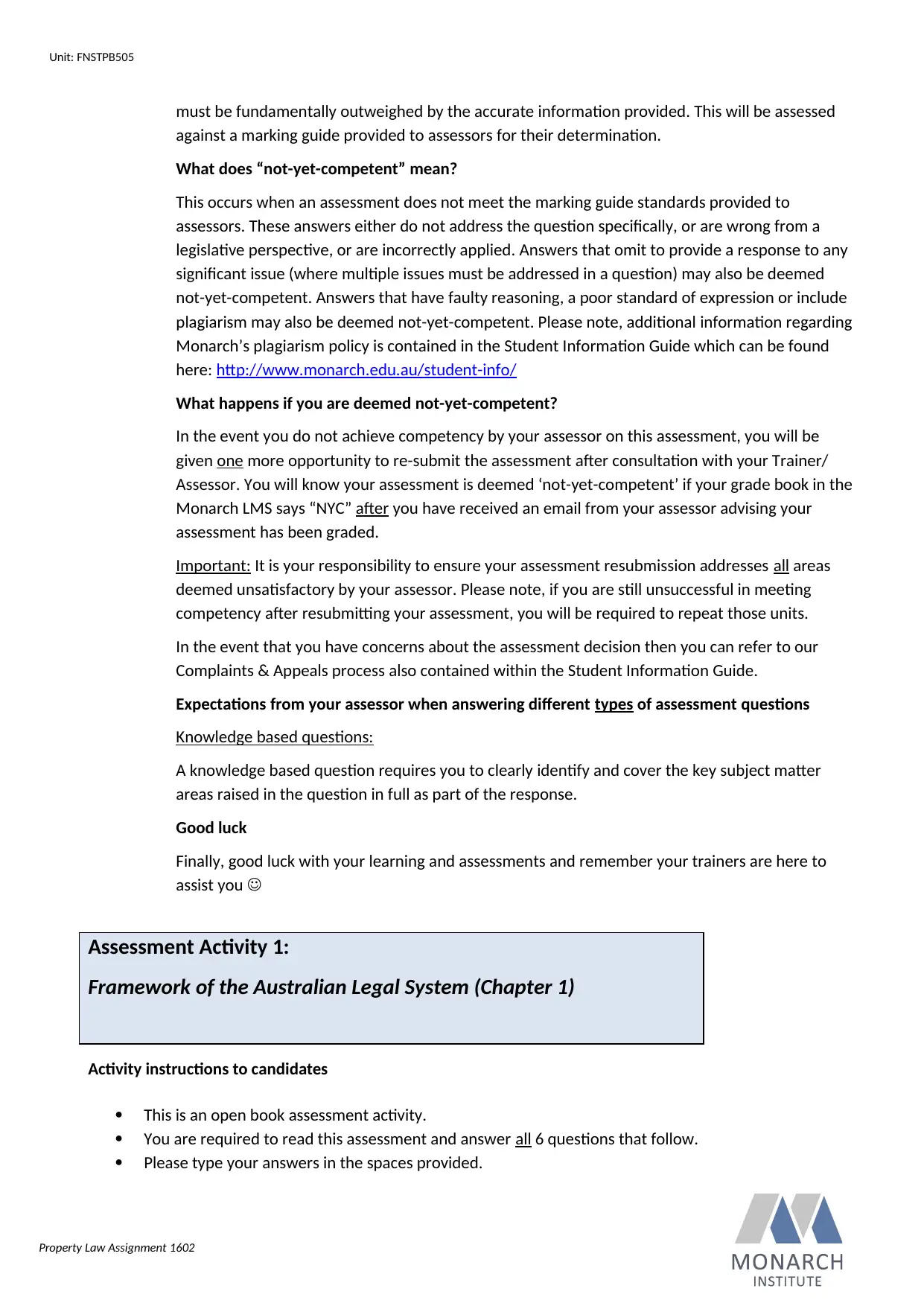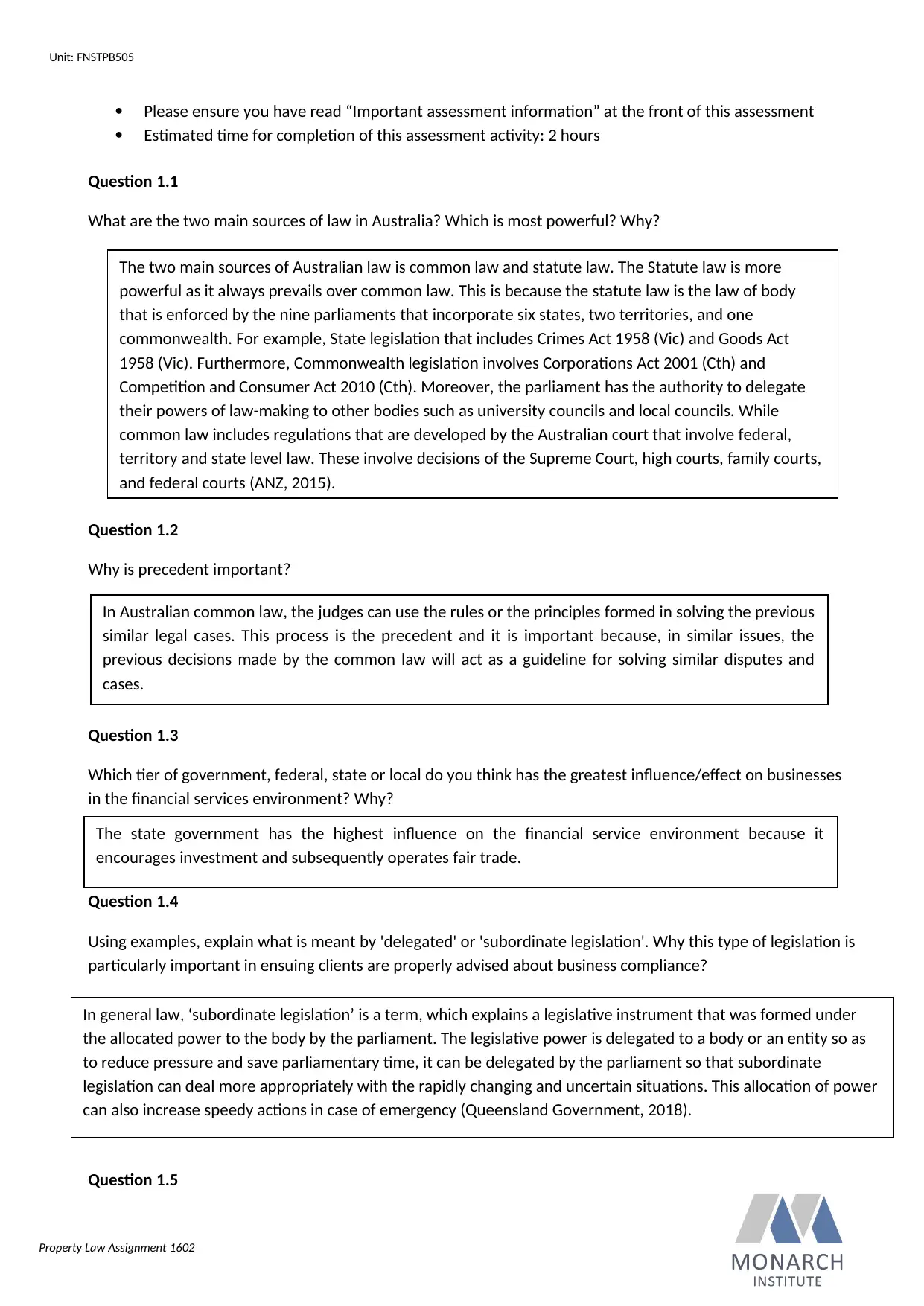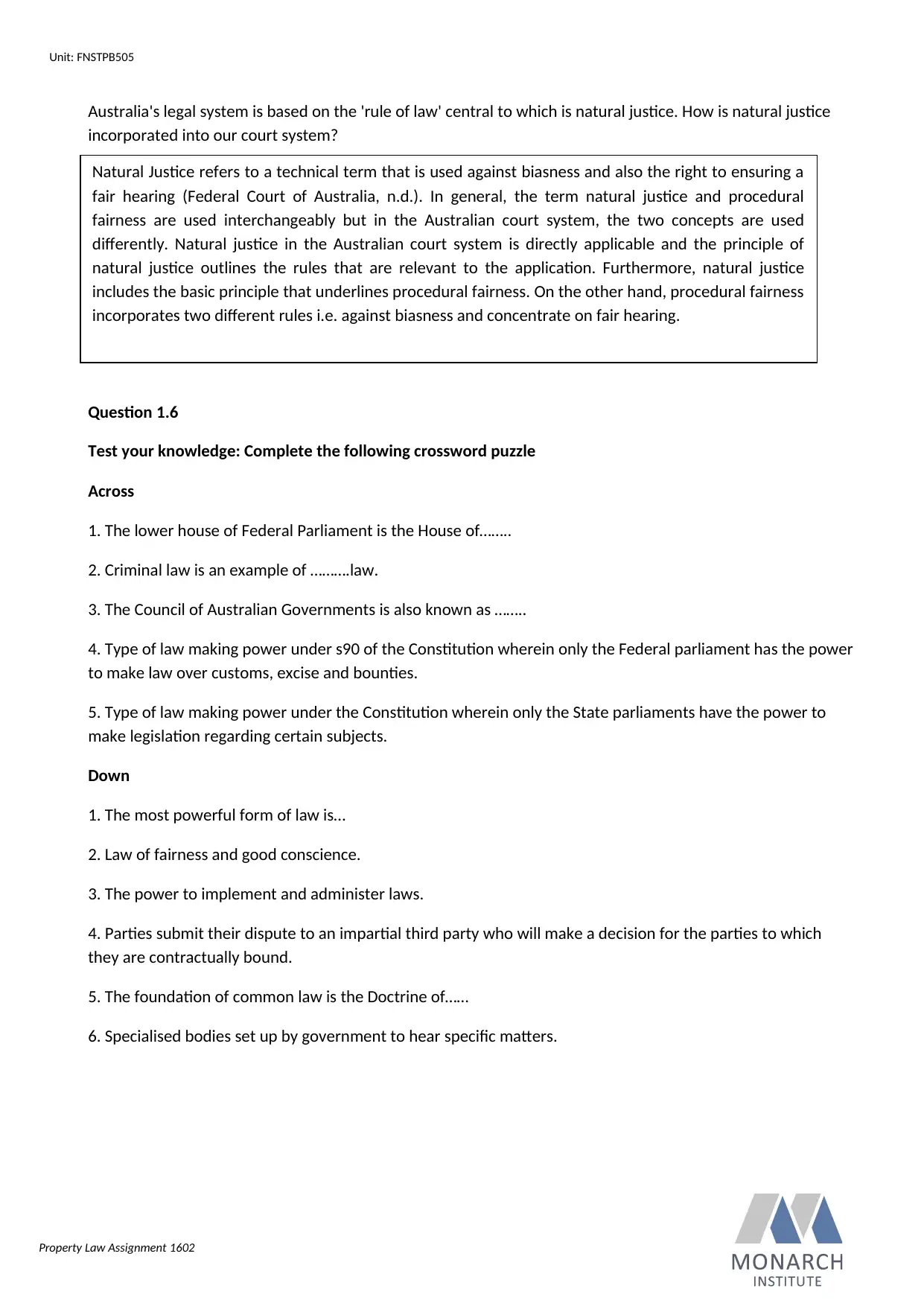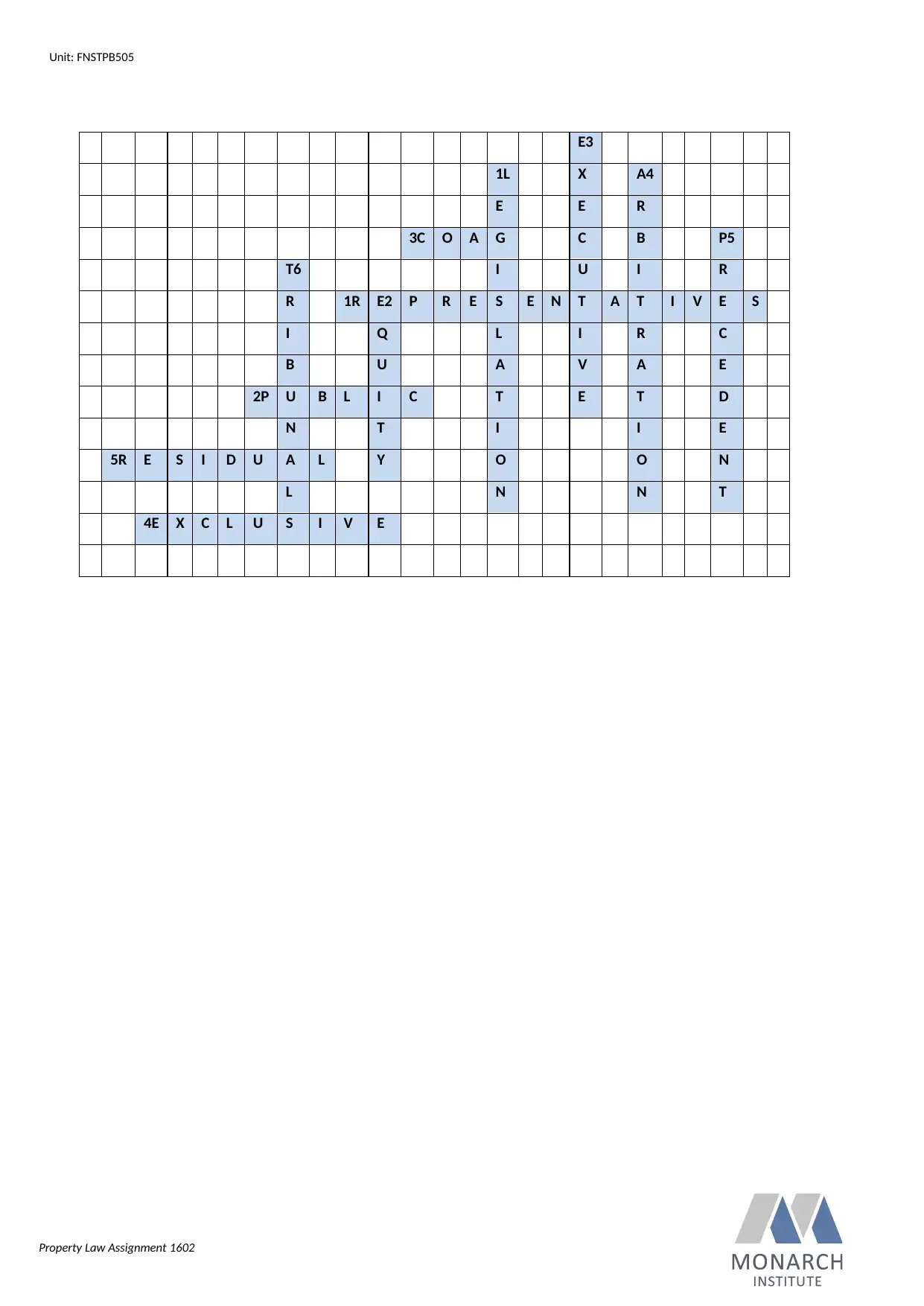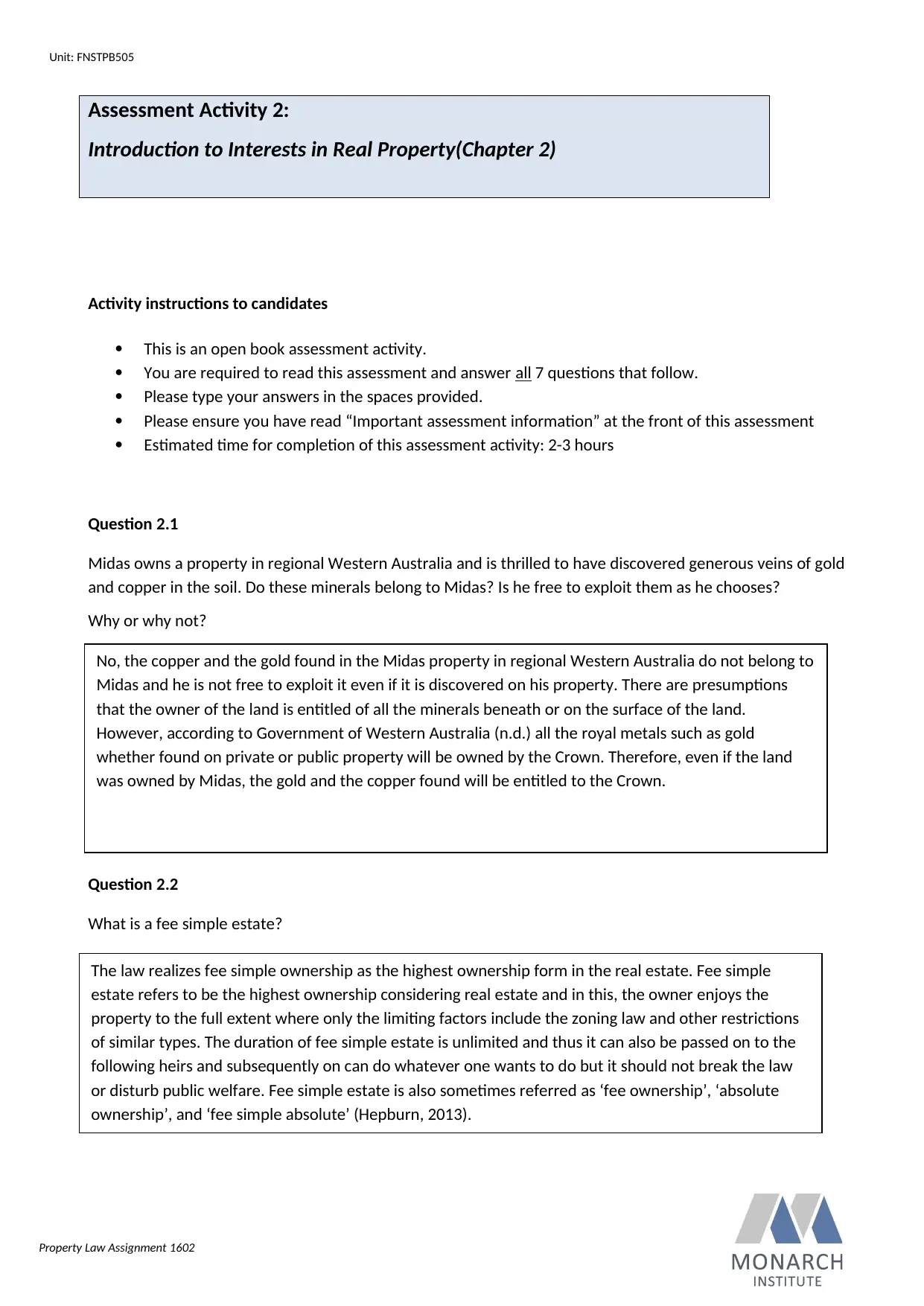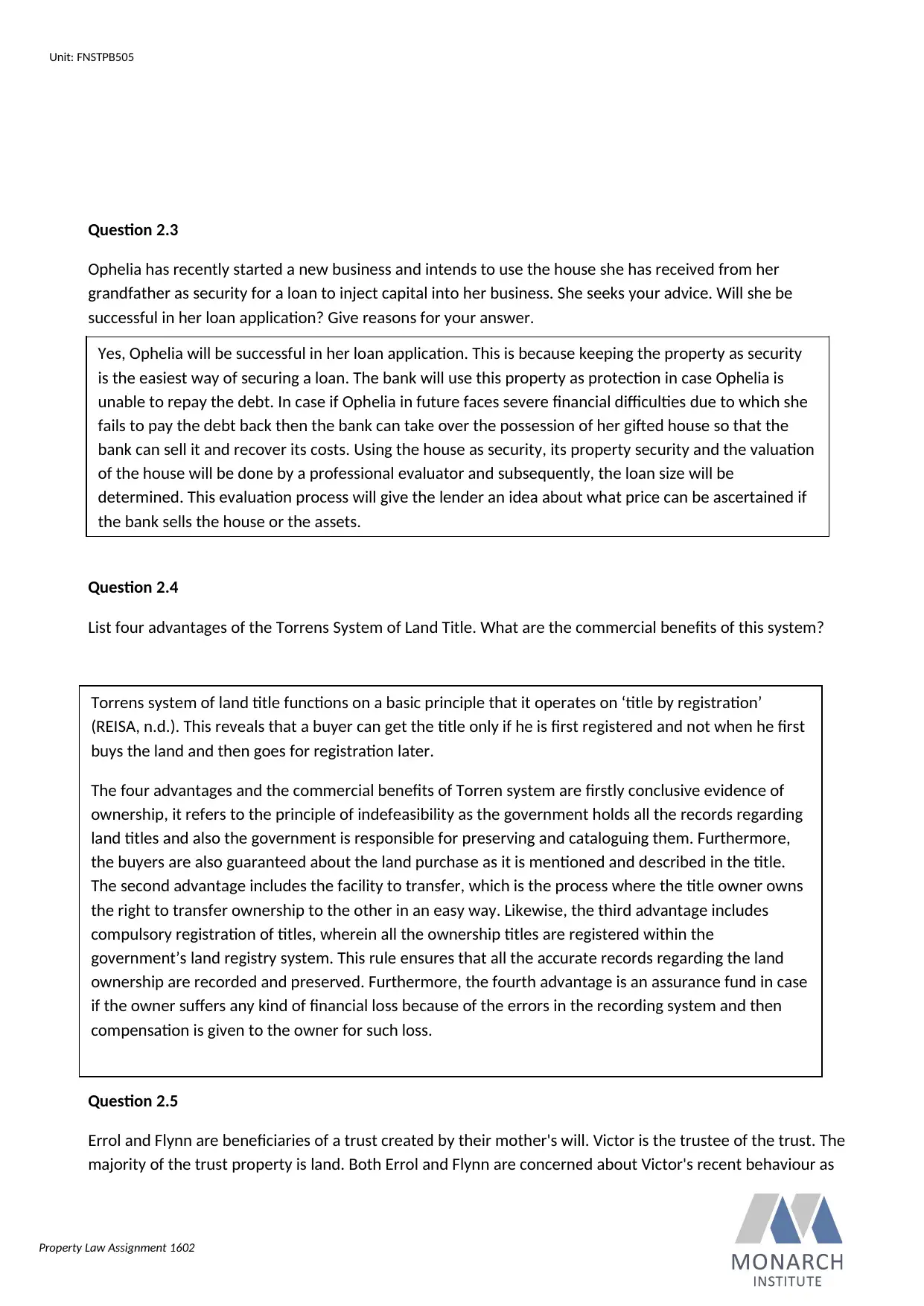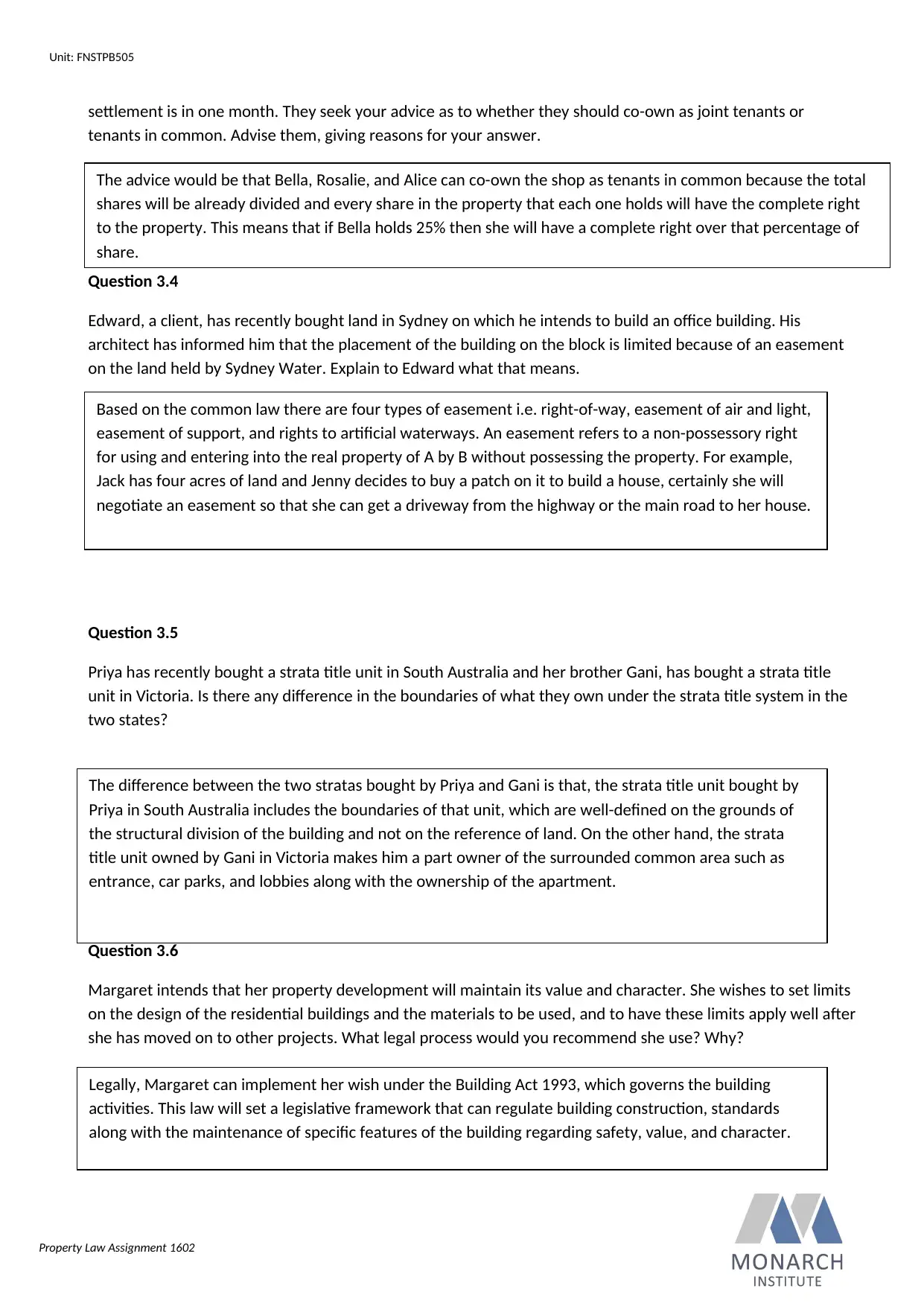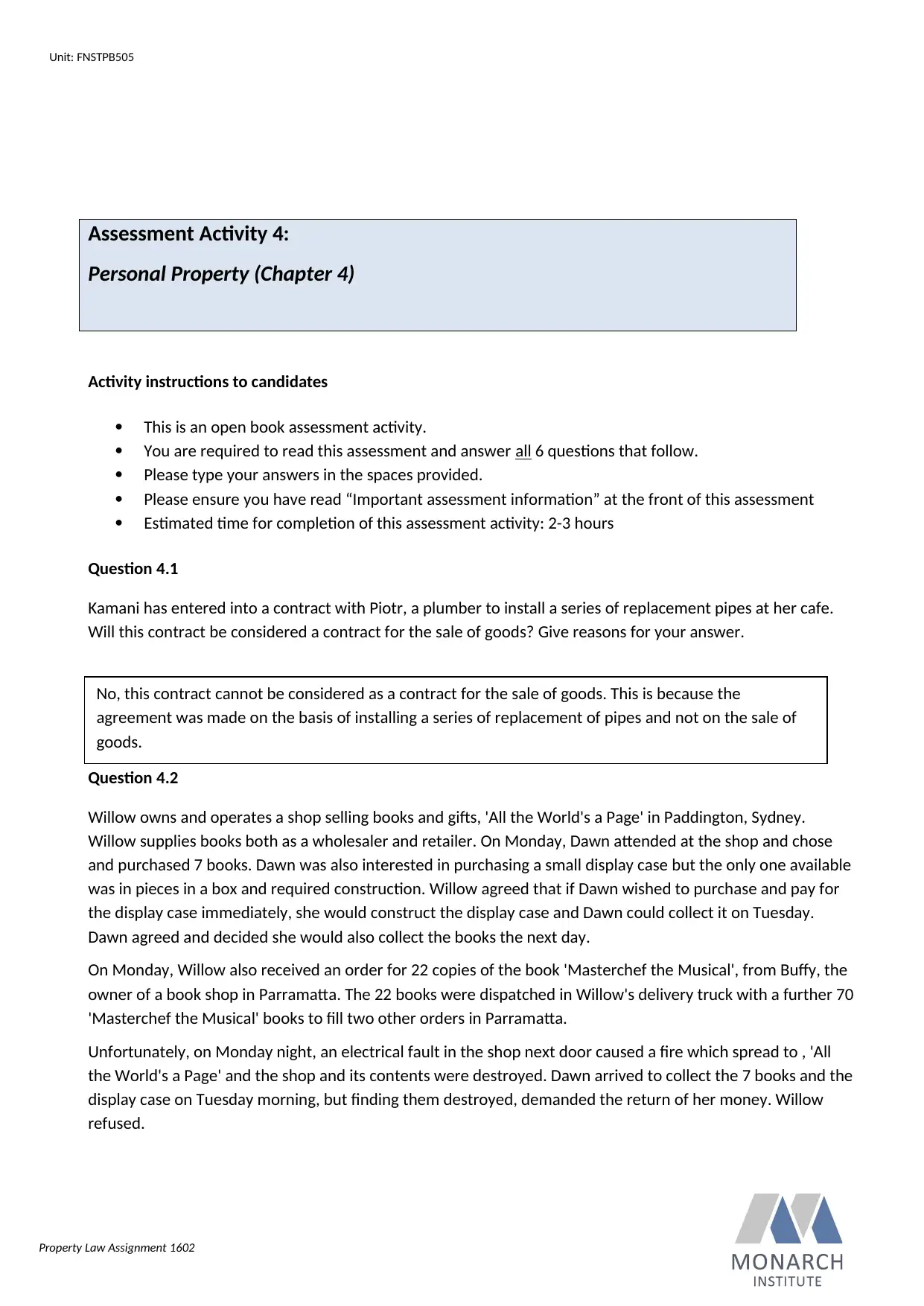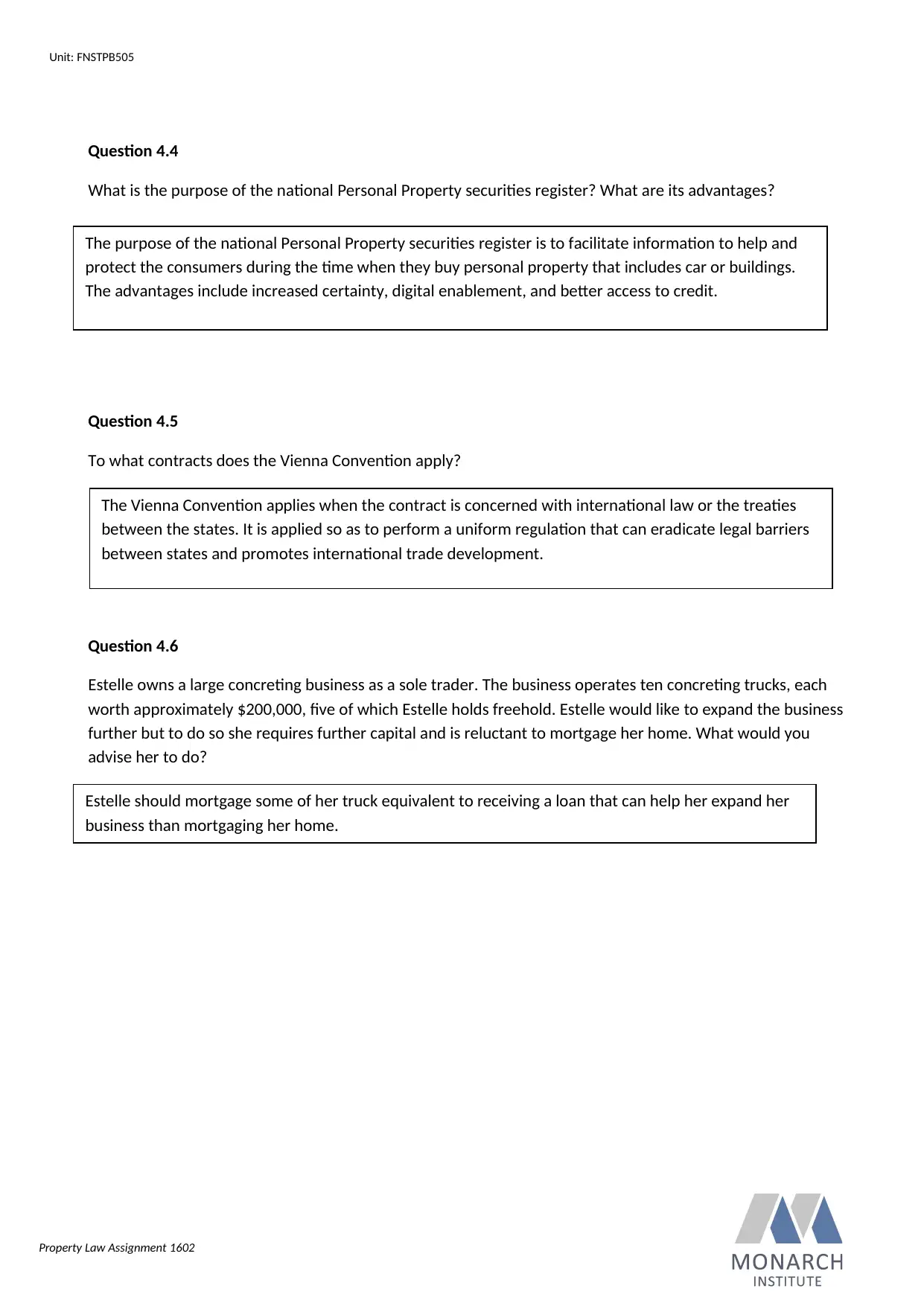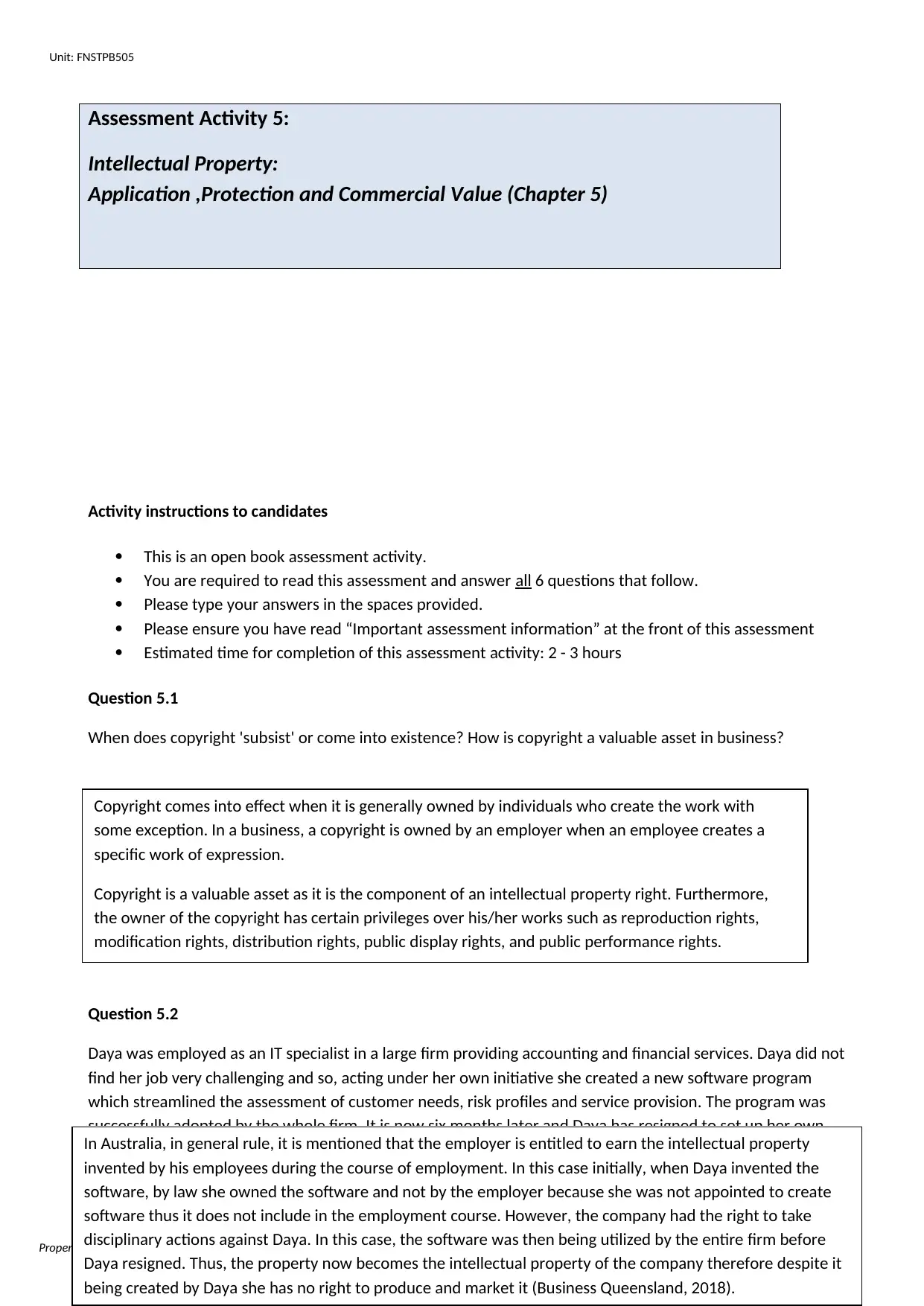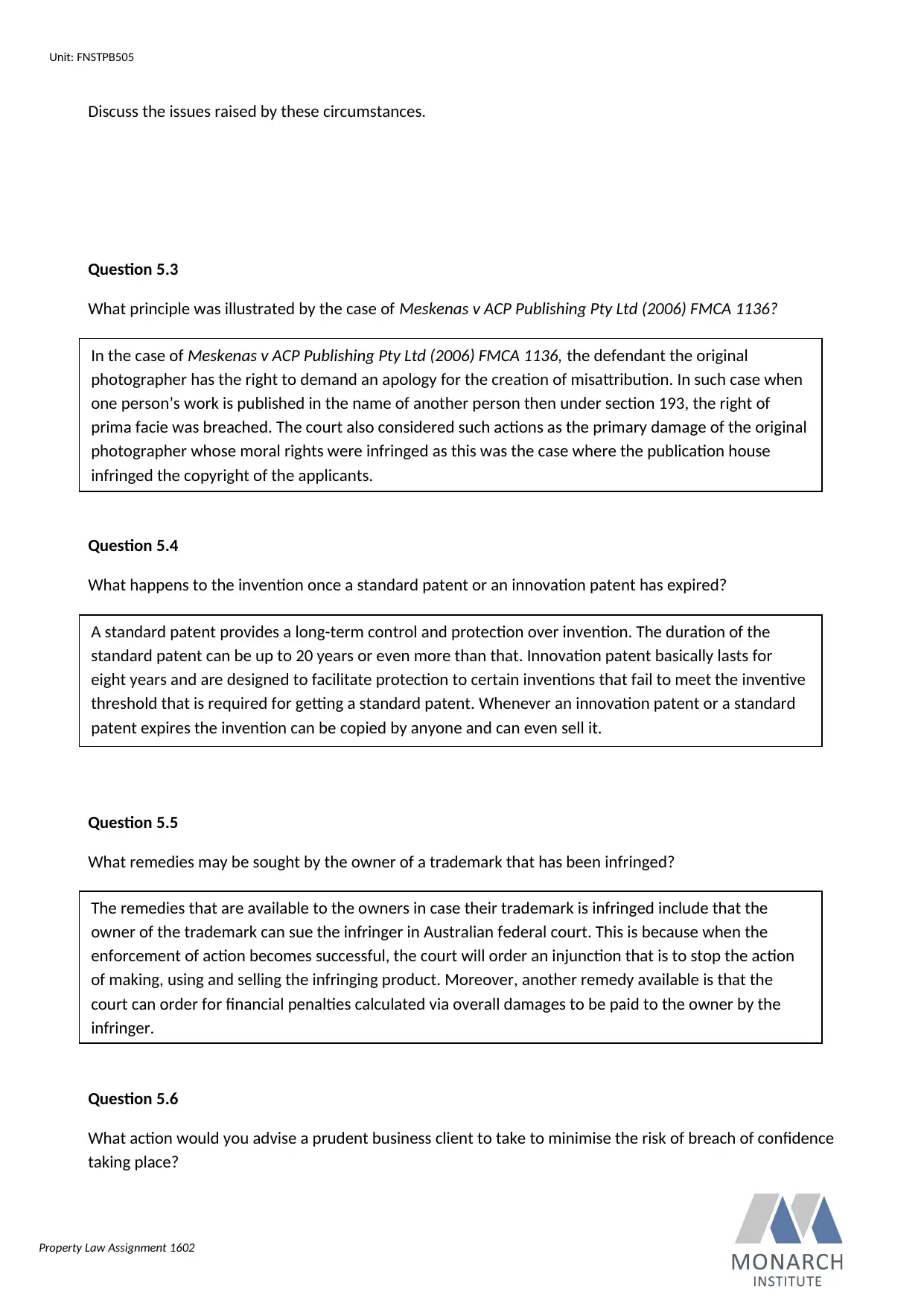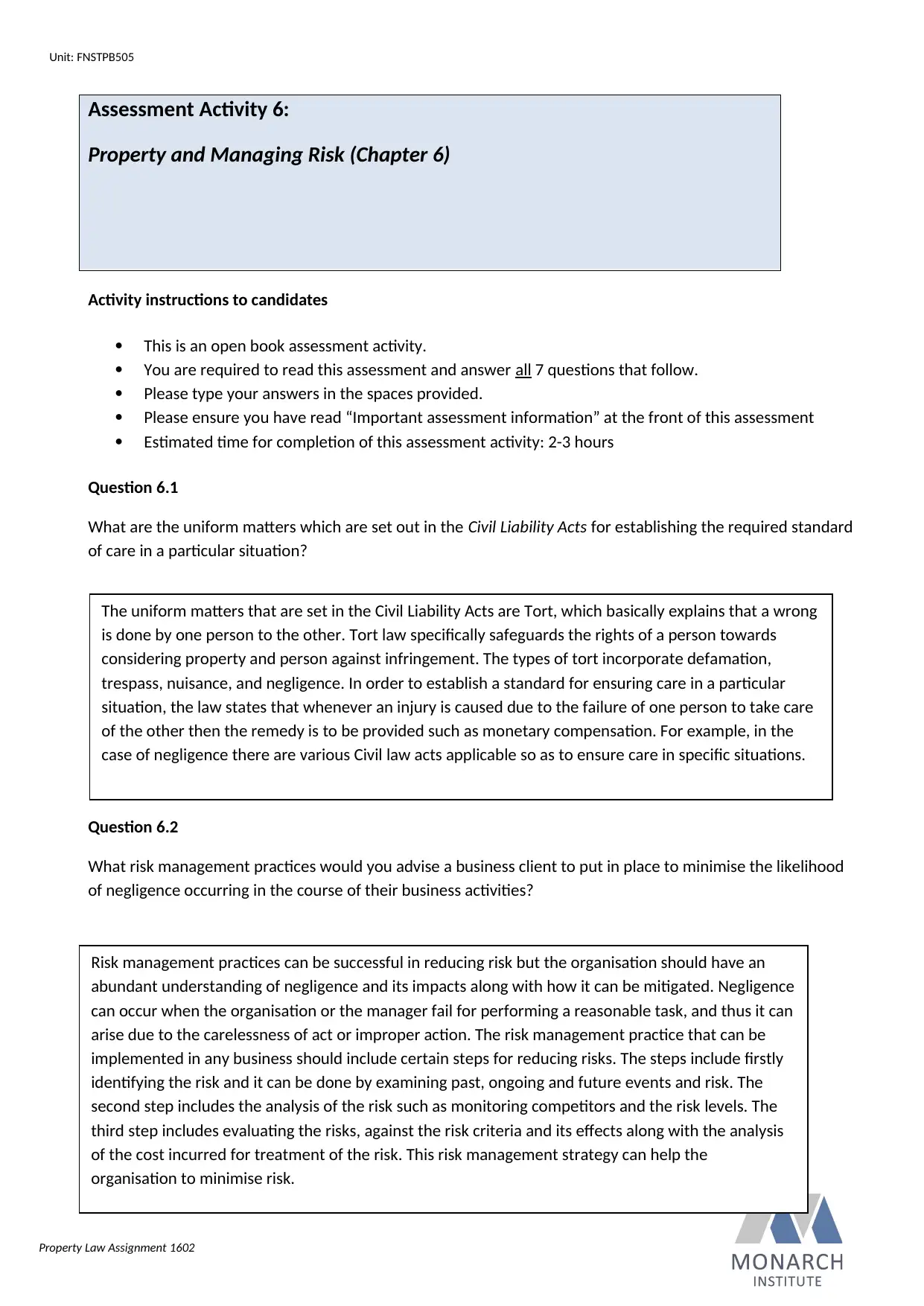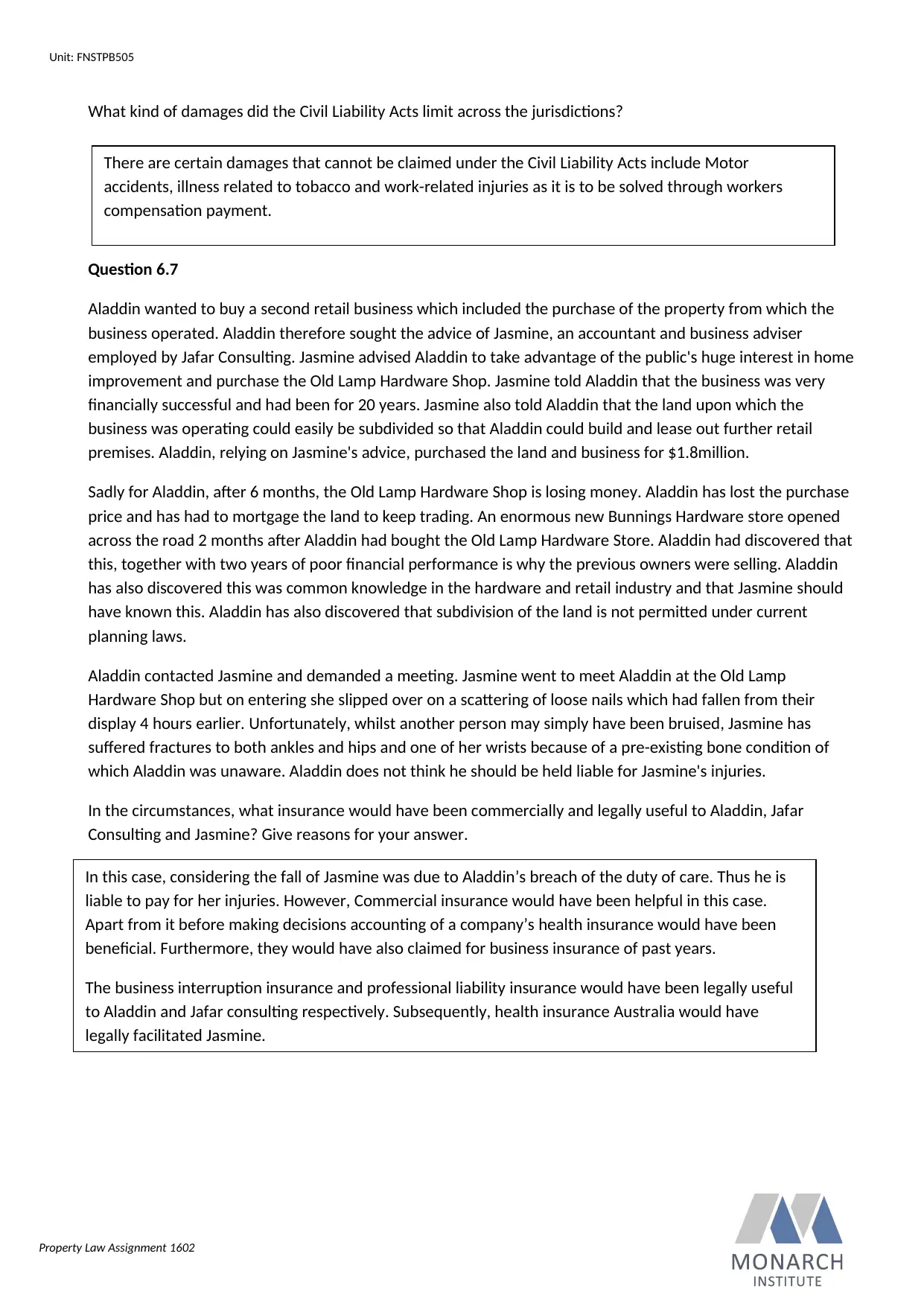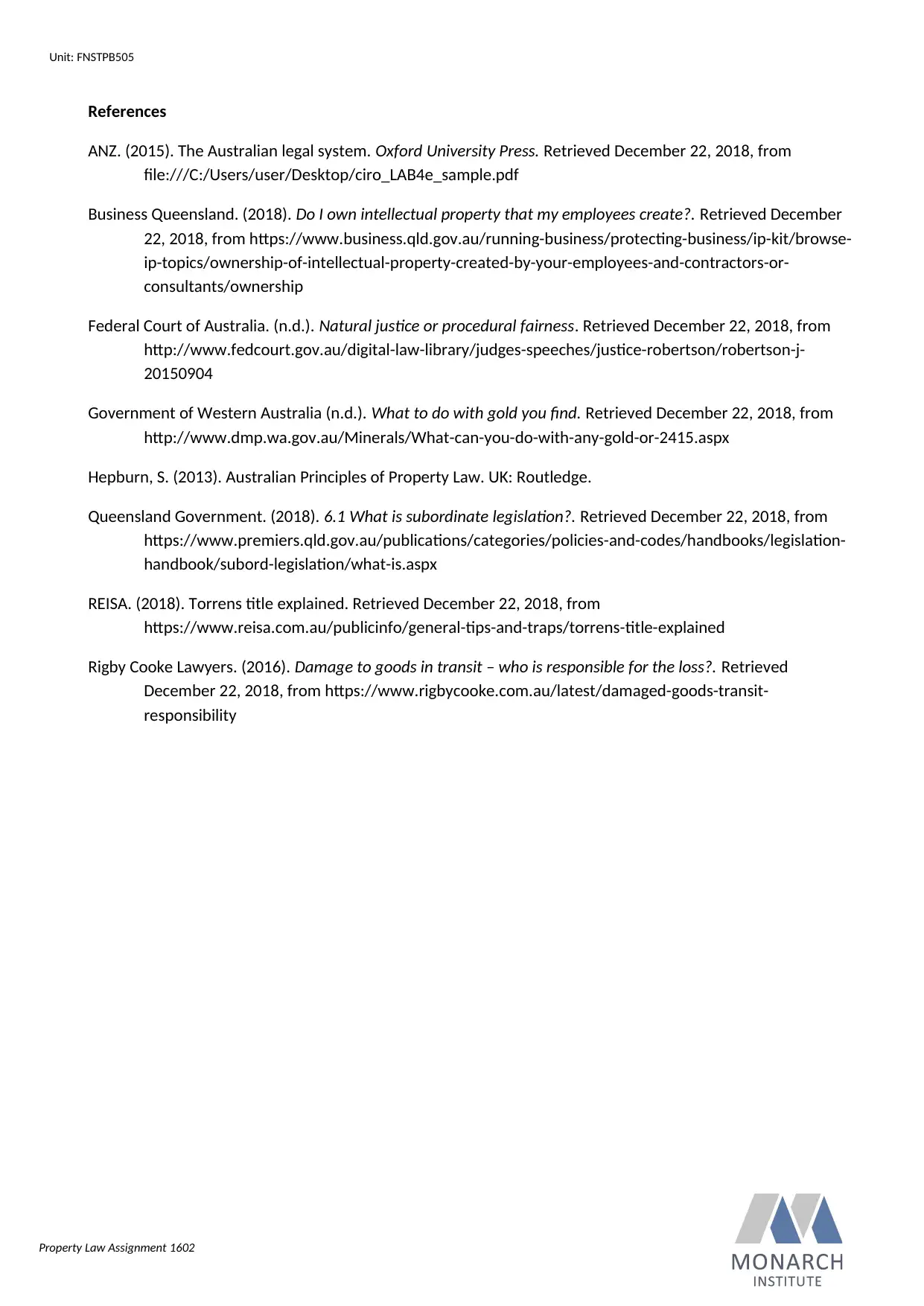This assignment covers the application of legal principles in property law. It requires the completion of a set of questions in relation to the framework of the Australian legal system, introduction to interests in real property, and shared and transferred interests in real property. Personal property as well as intellectual property are also covered. The assessment includes an overall understanding of the way that Australian law operates; covering legislation and case law. This is explored through the assessment of various business based scenarios. It explores the ownership aspects of real property, trust property, personal property and intellectual property. Risk management, with relevance to business situations forms the final part of the assessment.
![[object Object]](/_next/static/media/star-bottom.7253800d.svg)
![[object Object]](/_next/static/media/star-bottom.7253800d.svg)
